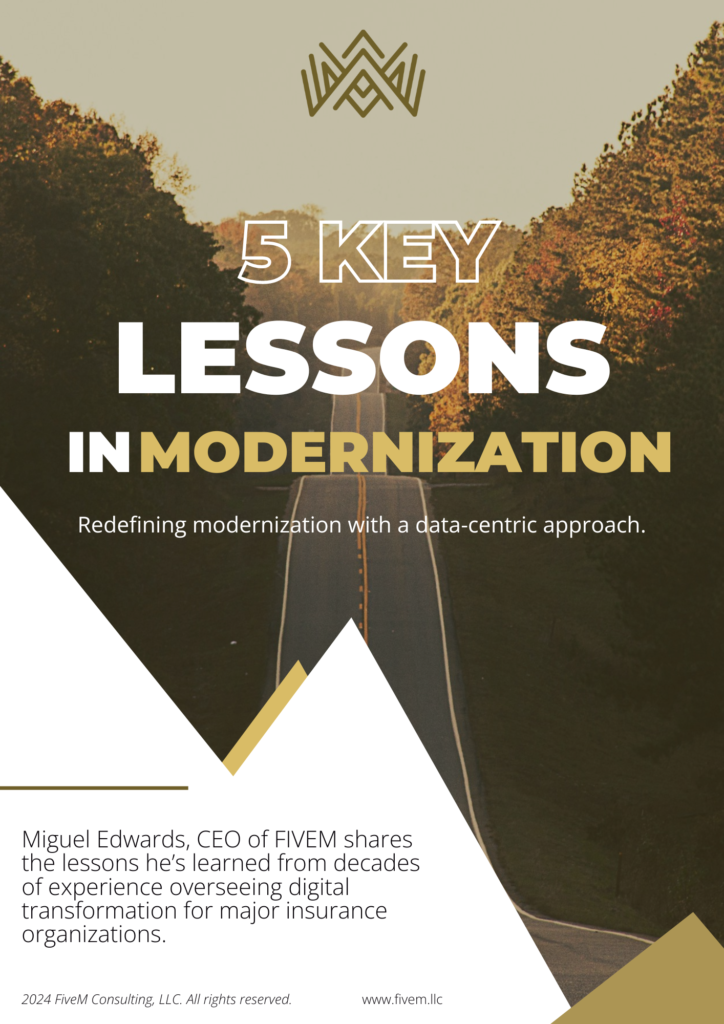No-Code/Low-Code (NCLC) platforms are transforming the way insurance companies modernize their operations, helping them streamline processes and meet rising customer expectations faster. However, legacy systems, regulatory requirements, and IT bottlenecks often slow down digital transformation efforts. By enabling faster application development with minimal coding, NCLC platforms can accelerate modernization, reduce IT burdens, and empower business users. But how effective are they in the insurance industry? Let’s explore.
The Problem: IT Bottlenecks and Slow Modernization
Many insurance companies rely on aging legacy systems that require ongoing maintenance. IT teams are overwhelmed with compliance demands, cybersecurity concerns, and an ever-growing backlog of development projects.
Traditional software development cycles can take months or even years, making it difficult for insurers to respond quickly to market demands. As a result, innovation stalls, customer experience suffers, and companies struggle to stay competitive.
Key IT Challenges in Insurance
- Legacy system limitations
- Lengthy development cycles
- Overburdened IT departments
- Stringent regulatory compliance requirements
To overcome these challenges, insurers need a more agile and efficient approach to software development. This is where No-Code/Low-Code platforms come in.
The Solution: How No-Code/Low-Code Unlocks Efficiency
No-Code/Low-Code platforms allow users to create applications visually through configuration rather than extensive coding. By enabling business users—often called “citizen developers”—to build and modify applications, these platforms reduce reliance on IT teams and speed up digital transformation.
1. Empowering Business Users
Insurance professionals, such as claims adjusters and underwriters, understand their workflows better than anyone. With No-Code tools, they can design applications tailored to their needs without waiting for IT support.
Example: A claims adjuster can automate a claims approval workflow using a drag-and-drop interface, reducing processing time from days to hours.
2. Faster Product Development
The ability to quickly build and modify applications is crucial for insurers launching new policies, claims workflows, or digital customer portals. No-Code/Low-Code platforms significantly shorten development timelines while maintaining flexibility for future enhancements.
Industry Insight: Research shows that Low-Code platforms can reduce development time by 50-90% compared to traditional coding.
3. Reducing IT Backlogs
By shifting routine development tasks to business users, IT teams can focus on more complex, high-priority projects such as cybersecurity and core system upgrades. This helps eliminate bottlenecks and increases overall efficiency.
4. Seamless Integration and Compliance
Modern No-Code/Low-Code platforms come with:
- Pre-built integrations for insurance management systems
- Embedded security and compliance frameworks
- API libraries for seamless connectivity with existing software
For insurers handling sensitive customer data and regulatory requirements, these features are critical for ensuring security and compliance while modernizing operations.
The Challenges: Where No-Code/Low-Code Falls Short
Despite its benefits, NCLC technology has limitations. Insurance companies must be aware of potential challenges before adopting these platforms.
Scalability Limitations
While NCLC works well for automating workflows and building customer-facing applications, it may struggle to support complex, enterprise-level systems that require deep customization.
Security and Compliance Risks
Although many platforms offer built-in security, insurers must establish strict governance policies to prevent data breaches and ensure compliance with industry regulations.
Vendor Lock-In
Selecting the wrong platform can lead to dependency on a single vendor, making future migration difficult if business needs change.
Solution: Choose platforms with open standards and strong API support to maintain flexibility.
Limited Customization for Complex Processes
Highly specialized insurance processes, such as AI-driven fraud detection or advanced risk modeling, often require custom development that NCLC platforms may not fully support.
Solution: Use a hybrid approach that combines NCLC for speed and full-code development for complex system enhancements.
Best Practices for Implementing NCLC in Insurance
To maximize the benefits of No-Code/Low-Code while avoiding potential pitfalls, insurers should follow these best practices:
1. Define Clear Use Cases
Not every insurance process should be automated using No-Code/Low-Code. Focus on high-impact areas such as:
- Claims automation
- Policy issuance
- Customer self-service portals
2. Establish Governance and Risk Management
Implement policies covering:
- Security controls
- Data governance
- Compliance standards
Strong governance ensures regulatory compliance and minimizes security risks.
3. Adopt a Hybrid Development Model
Use No-Code/Low-Code for rapid prototyping and workflow automation while relying on traditional coding for complex system integrations and advanced functionalities.
4. Train and Support Citizen Developers
Providing education and resources for business users is crucial. Consider creating a Center of Excellence (CoE) to oversee No-Code/Low-Code adoption and ensure best practices are followed.
5. Monitor, Optimize, and Scale
Regularly review the performance, security, and scalability of No-Code/Low-Code applications. Adapt the strategy based on real-world usage and business needs.
The Verdict: No-Code/Low-Code as a Strategic Enabler
No-Code/Low-Code is a powerful tool for modernization, not a complete replacement for traditional IT development. When used strategically, it can:
- Accelerate digital transformation
- Empower business users
- Reduce IT strain
However, success depends on proper governance, security, and scalability planning. A balanced approach that integrates No-Code/Low-Code with existing IT strategies will help insurers stay competitive in a rapidly evolving digital landscape.
FAQs: No-Code/Low-Code in Insurance
Q1: Is No-Code/Low-Code secure for the insurance industry?
Yes, modern platforms include enterprise-grade security, but insurers should enforce governance policies to protect data.
Q2: Can No-Code/Low-Code replace traditional software development?
Not entirely. While it speeds up many processes, complex systems still require traditional coding.
Q3: How much time can insurers save with No-Code/Low-Code?
Reports suggest development time can be reduced by 50-90%, depending on the project.
Q4: Which insurance processes benefit most from No-Code/Low-Code?
Claims processing, policy issuance, customer portals, and workflow automation are ideal candidates.Q5: What is the biggest risk of adopting No-Code/Low-Code?
Vendor lock-in and security risks. Choosing a flexible platform with open standards can mitigate these





